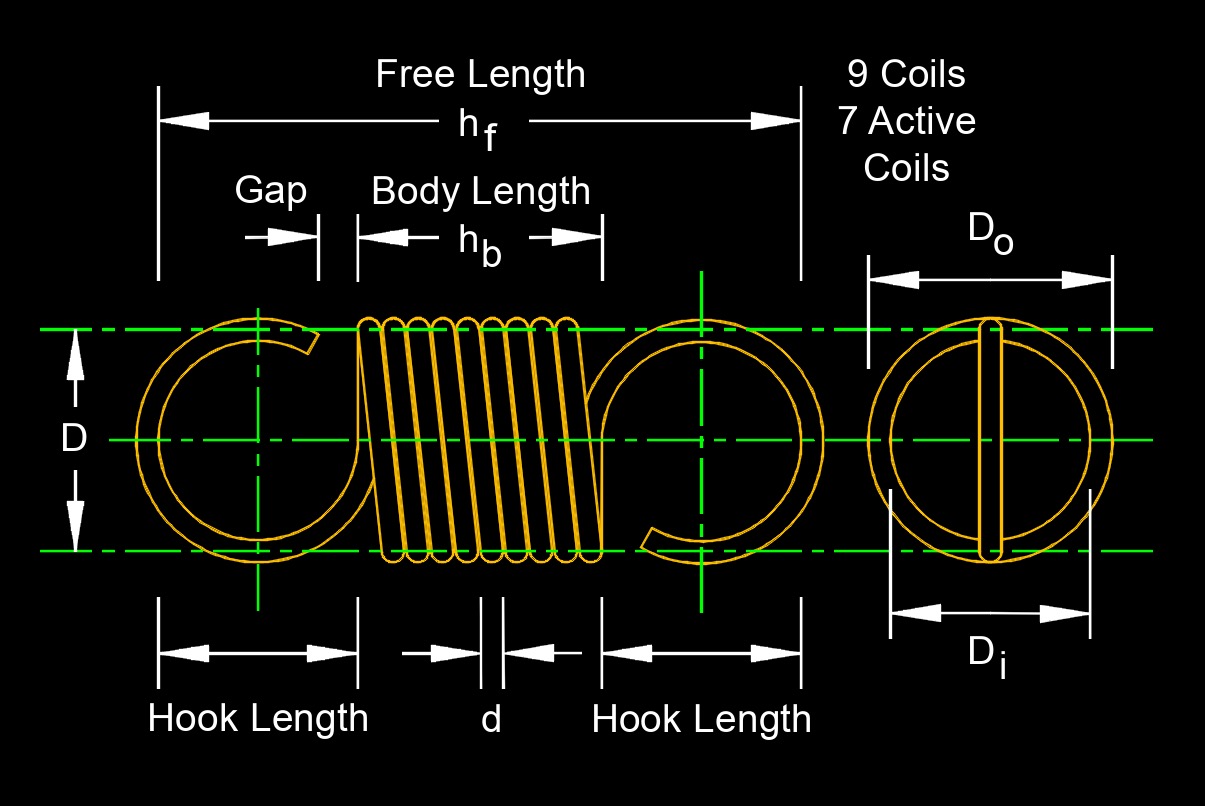Extension Spring

 Extension spring is a helical spring like a compression spring with hooks on each end. The ends of the spring are attached to other components creating a resistance force that absorb and store mechanical energy that opposes the resistance to a pulling force that wants to return back to its origional position. It is designed to expand or stretch when subjected to a load or force and return to its original, coiled position when the force is removed. These springs are commonly used in a wide range of applications where tension or pulling forces need to be counteracted or controlled.
Extension spring is a helical spring like a compression spring with hooks on each end. The ends of the spring are attached to other components creating a resistance force that absorb and store mechanical energy that opposes the resistance to a pulling force that wants to return back to its origional position. It is designed to expand or stretch when subjected to a load or force and return to its original, coiled position when the force is removed. These springs are commonly used in a wide range of applications where tension or pulling forces need to be counteracted or controlled.
Key Points about Extension Springs
Coil Shape - Extension springs typically have a helical coil shape, with loops at both ends. One end is usually attached to a fixed point, while the other end is connected to the object or component that needs to be pulled or extended.
Material - Extension springs can be made from various materials, including high-carbon steel, stainless steel, and various alloys. The choice of material depends on factors such as the required strength, resistance to corrosion, and environmental conditions.
Load and Force - These springs are designed to exert a pulling force when extended. The amount of force they can generate depends on factors such as the wire diameter, coil diameter, and the number of coils in the spring.
Applications - Extension springs are used in a wide range of applications, including but not limited to:
- Automotive: - They can be found in vehicle suspension systems, trunks, and hoods.
- Industrial - Used in conveyor systems, garage doors, farm equipment, and more.
- Consumer Products - Often used in retractable cords, toys, and various household items.
- Aerospace - Employed in aircraft components and systems.
- Medical Devices - Used in medical equipment and devices.
Hooks and Ends - Extension springs typically have hooks, loops, or other types of end configurations that facilitate attachment to other components or surfaces.
Design Considerations - When designing with extension springs, engineers need to consider factors like the required force, the desired extension distance, the spring rate, and the spring's fatigue life.
Safety - It's important to handle extension springs with care as they store potential energy when stretched, and sudden release or failure can be hazardous.
Extension springs come in various sizes and configurations to meet specific application requirements. Their design and selection depend on factors such as the load, extension distance, space constraints, and environmental conditions in which they will be used.

